Process

Starting
Initially, our conversations revolved around a multitude of varying ideas. To begin discussion, we started throwing out any general ideas / concepts / experiences we were generally interested in pursuing or talking about. From that discussion we produced a list of ideas we were all interested in to frame our concepting discussion:
- personal connections in unexpected places
- balance between speculative and practical
- real vs. surreal
- physical vs. digital
- pop culture as a site of significance
- sensationalism
- how our influences shape our identity
This helped us move into doing some research to further explore and develop our concepts.

Research
Slide to Expose
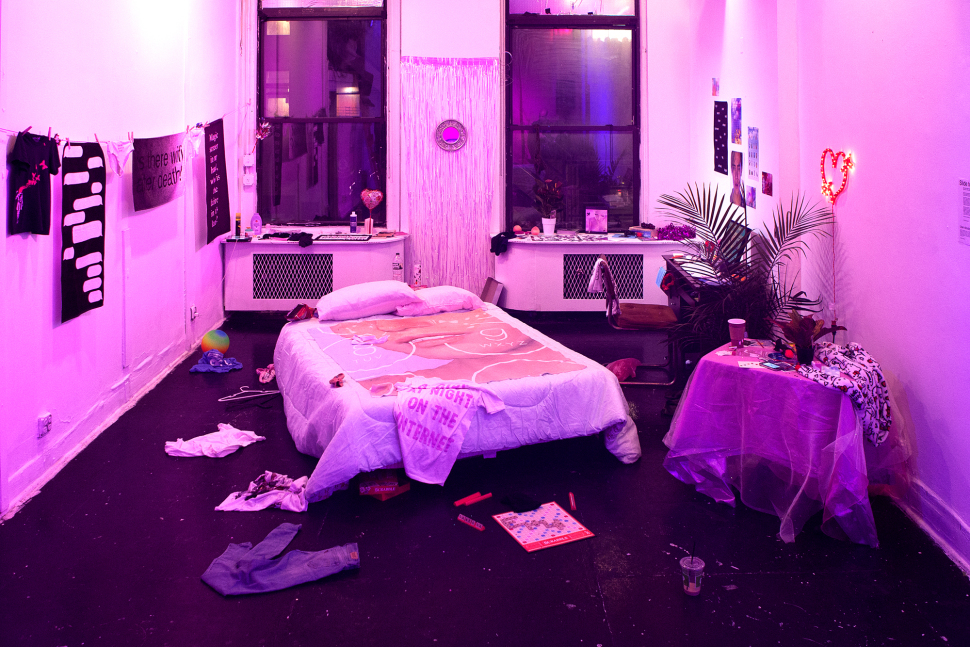
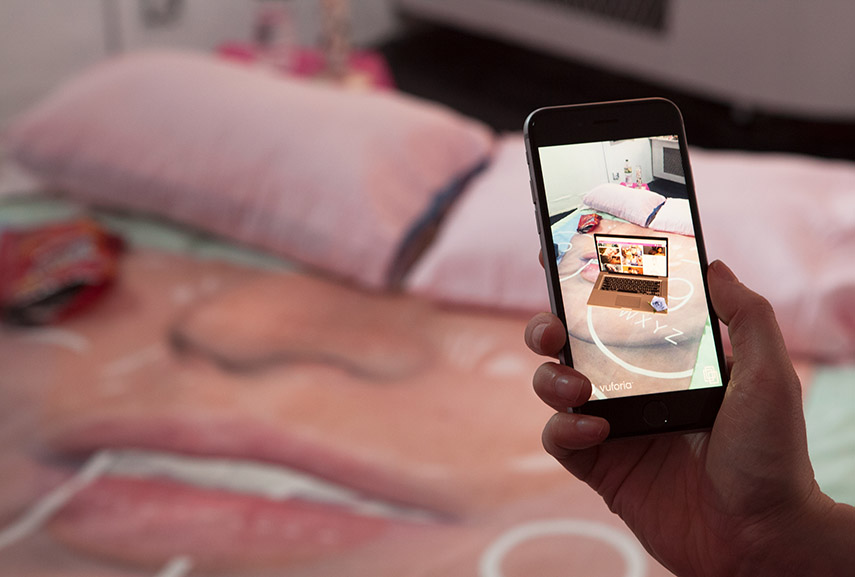
We were really interested in this piece by Molly Soda and Nicole Ruggiero that combines space curation and augmented reality. This piece acted as a culmination of a lot of the things we had been talking about - identity and the blending of physical and digital spaces. We also felt like it really spoke to the same audience whose experience we were discussing: young people who grew up on the internet. The space very clearly defines an identity that is at the same time specific but also very relatable, and the augmented reality app acts as a portal to uncover more aspects of this idenity.
Codes of Honor
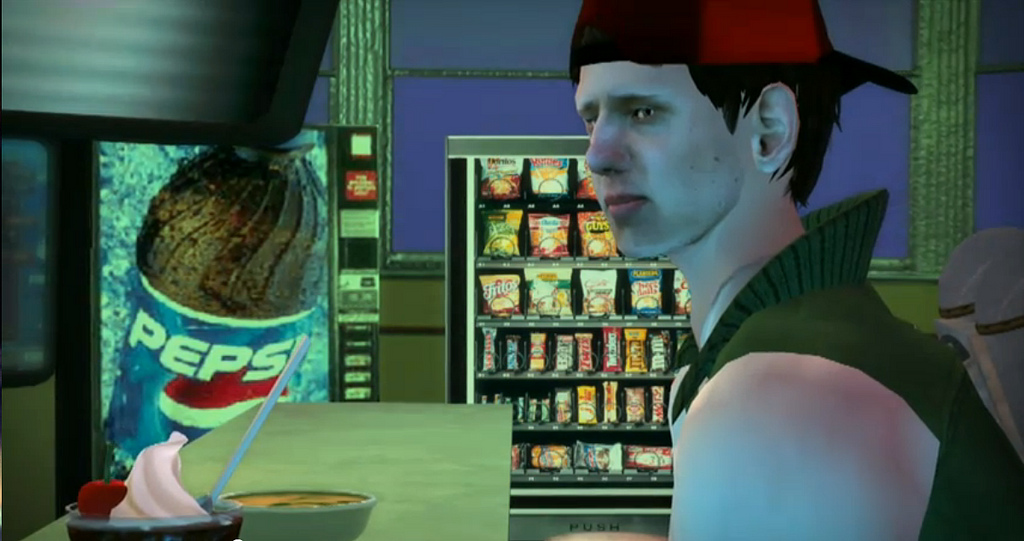
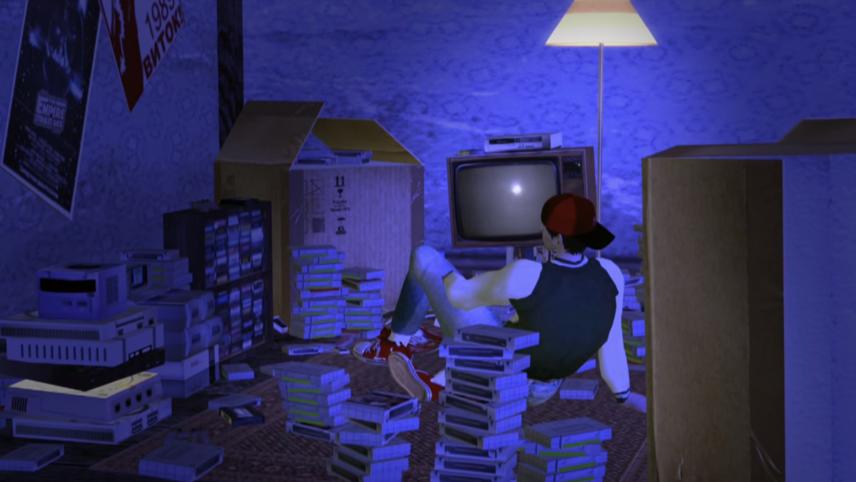
Codes of Honor is a short film / video piece by Jon Rafman made almost entirely in the virtual chat room Second Life. What we found really intriguing about this piece is the creation of identity and narrative through a purely digital landscape. He creates such a believable character with his own dreams and memories in a platform built for acting out fantasies. What is also really interesting about this piece is that the character's memories are footage of real people, possibly relating to how people of Rafman's generation had some childhood without the internet, so there are still memories of a pre-net age.
Meow Wolf
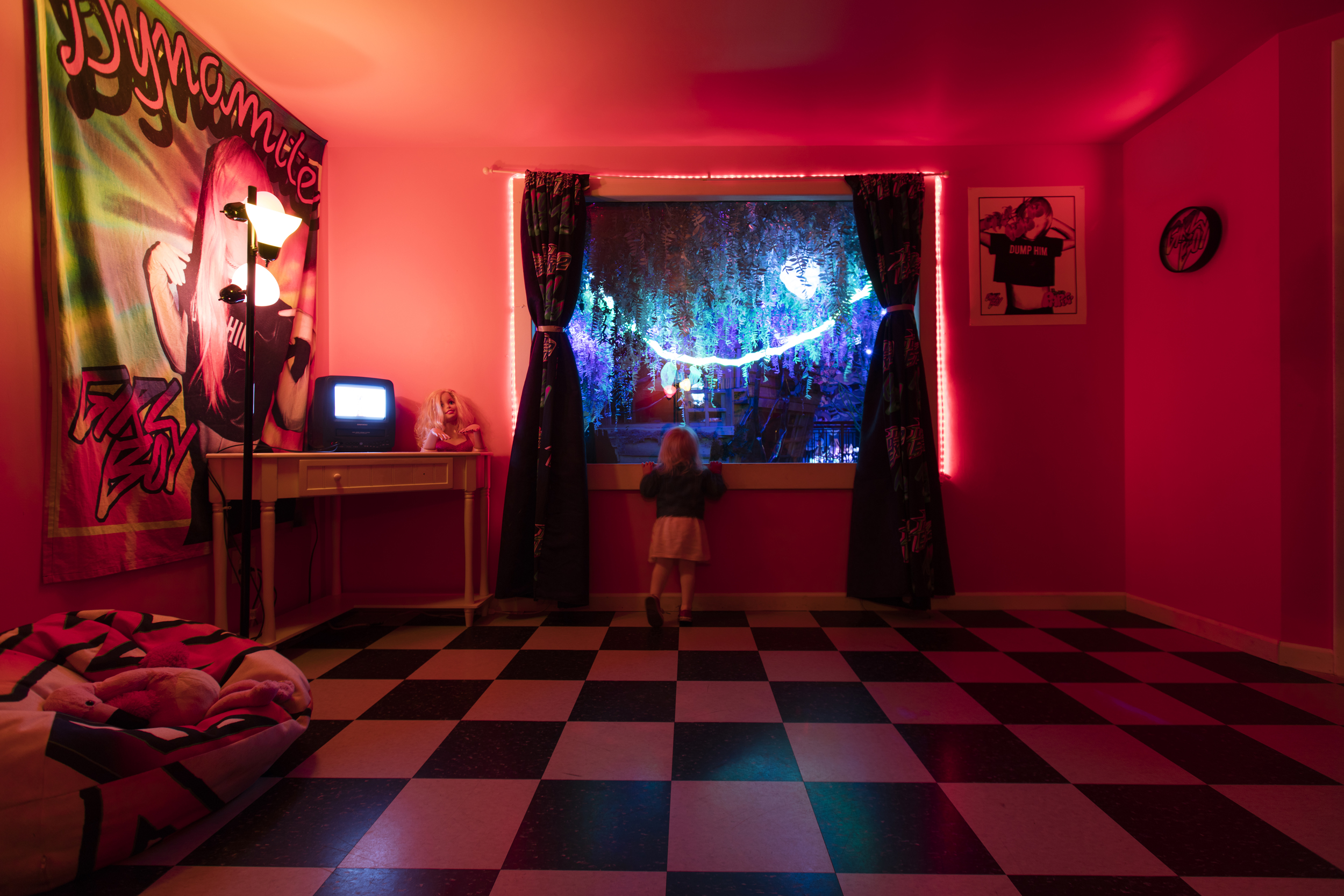
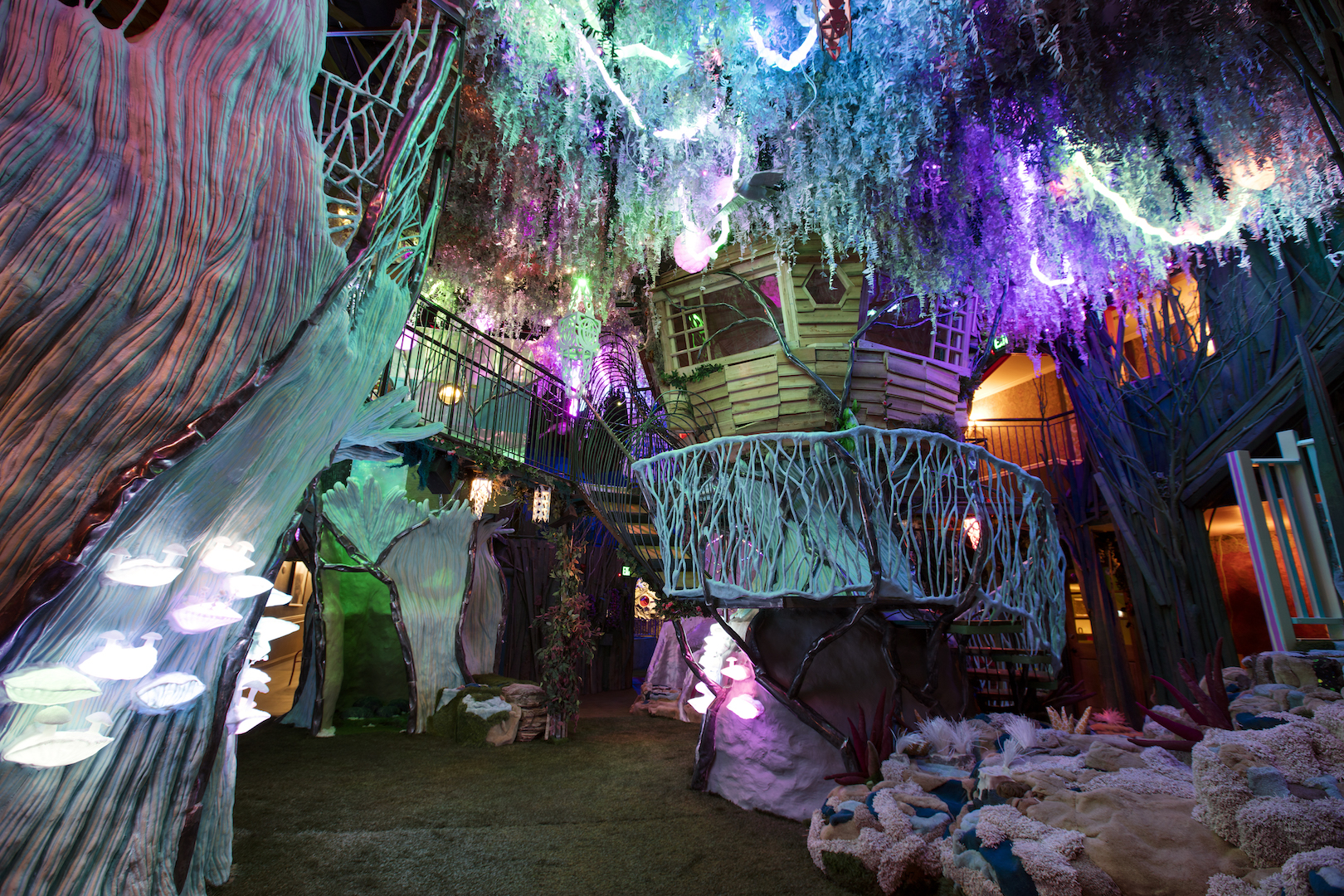
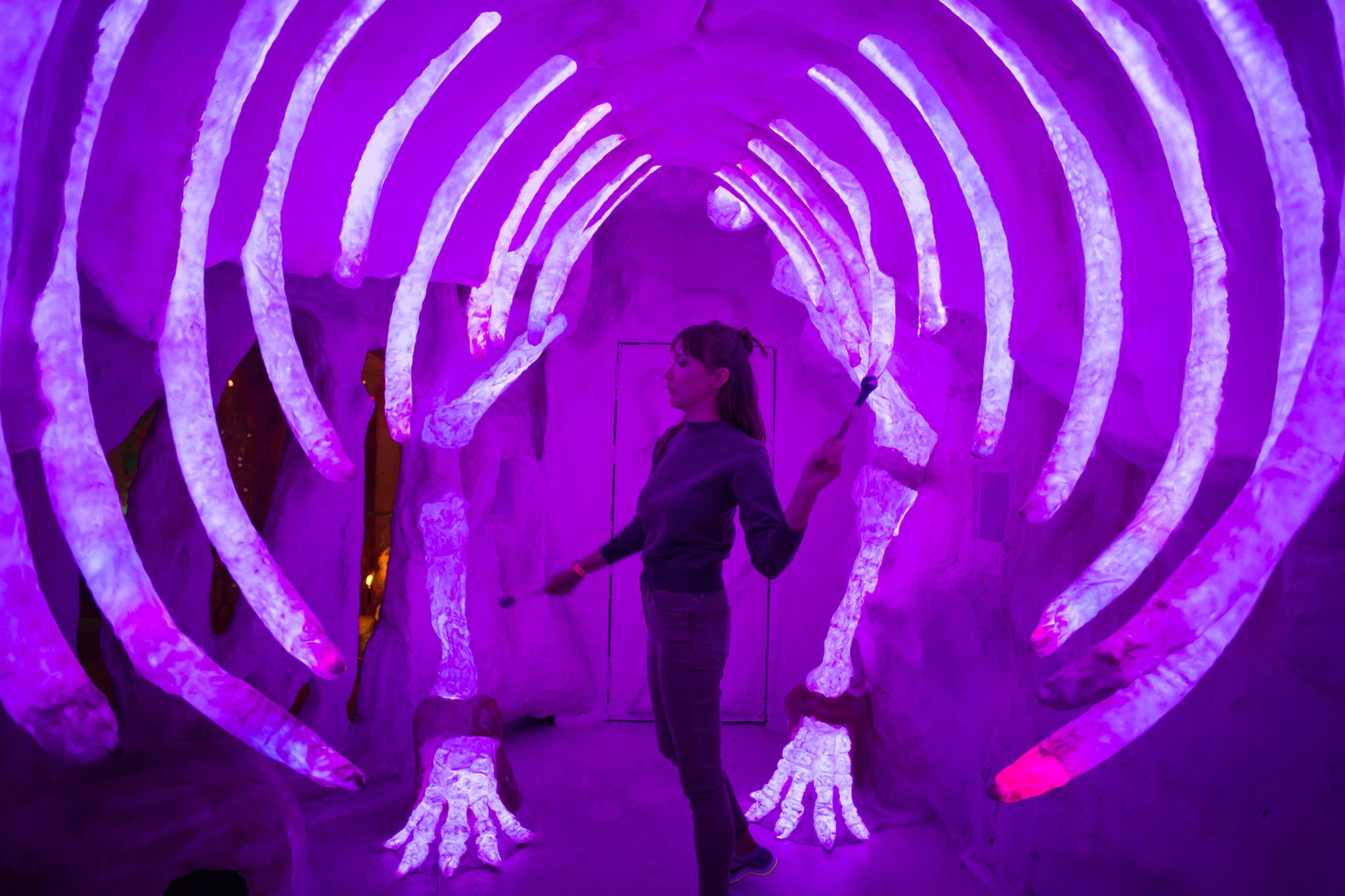
Meow Wolf is an immersive art experience in Santa Fe, New Mexico. The whole space presents a nonlinear narrative that is uncovered by exploring the rooms / other world. Bits and pieces of a story are picked up by reading ephemera, finding hidden videos, and hearing voice memos from a mad scientist's diary. Having multiple different forms of media that acted as bits and pieces of one narrative through exploration was a really interesting concept to us, and led into our form-making discussions.
The Rise of the Social Media Fembot

Article Here
This article lead to a lot of discussion about how we form our identities online. When interacting with people online or curating a social media page, it's almost like sending out an avatar to present yourself, being shaped by the content you see and the content people respond to. Without having to confront people face to face, we are almost more comfortable sharing more of ourselves, but only what we chose to display. If there are consequences, positive or negative, this shapes our online identities and in turn our IRL identities.
Iridescence, Intimacies
The virtual here is juxtaposed with the real. This juxtaposition seems to be one of the basic tenets of virtual-reality talk—the virtual is opposed to the real in the sense of the material, corporeal, and so on. And yet—and this is what I want to draw attention to—it seems that one is also speaking of virtuality to describe the effect that is produced by this sphere, as marking something like a quivering space or phenomenon or something between the real and the virtual. It is an effect on the real; it is a trace of the virtual.
As we read this section, we were reminded of an earlier conversation about how when you're talking to someone online, your conversations seem to take place somewhere between the physical and the digital. The combination of being physically present in your own familiar space, but experiencing someone else through entirely digital communication, creates an in-between space that allows for a specific kind of intimacy. This article clarified for us that our final outcome would deal with this dynamic surface or space between the virtual and the real.

Ideation
After collecting a fairly significant amount of references and readings, we started to discuss what form we wanted our ideas to take. Initially we were very interested in using augmented reality, because we felt like it creates this really interesting experience where digitally fabricated objects become integrated with the physical world.
Our first idea had to do more with constructing a narrative. We talked about setting up a personal space, possibly a bedroom, that revealed aspects of our character's identity. The space would then be activated by using augmented reality to uncover another perspective. This utilized our interests in exploring how our identities are affected by the blending of our digital and physical worlds. We later scrapped this idea because we felt like it bore too much resemblance to Slide to Expose and didn't express exactly what we wanted.
We then became more interested in incorporating an exploration on how relationships are formed in our current digital climate. The goal then shifted to users forming a relationship or having an intimate experience with someone they can't see. One form idea included a space with stations of different activities, such as a station to make food or choose a record for a record player. There would be a small speaker at each station, and they would be motion activated, so when you get close to one the voice of our character would start speaking and prompt you to complete a task with it, as well as discussing more intimate subjects. In this way it was thought that a relationship could be formed between the user and the disembodied voice by doing things together, and the user would take on the role of listener rather than speaker.
After some more discussion, we decided that we did in fact want the user to take a more active role and the situation be affected by what they do. In terms of how they would input, we immediately went to the principal form of giving input and chatting online: a chatbot. We found the website Landbot, tested it, and locked it in as part of our piece.
Our first test:
As for what the space would look like, we still wanted it to resemble a bedroom, but maybe the objects in the space were more abstract. We wanted the space to shift in some way depending on what the user says to the chat bot, and one way we thought of achieving that was through projection. This brought us to the work of Derek Larson:
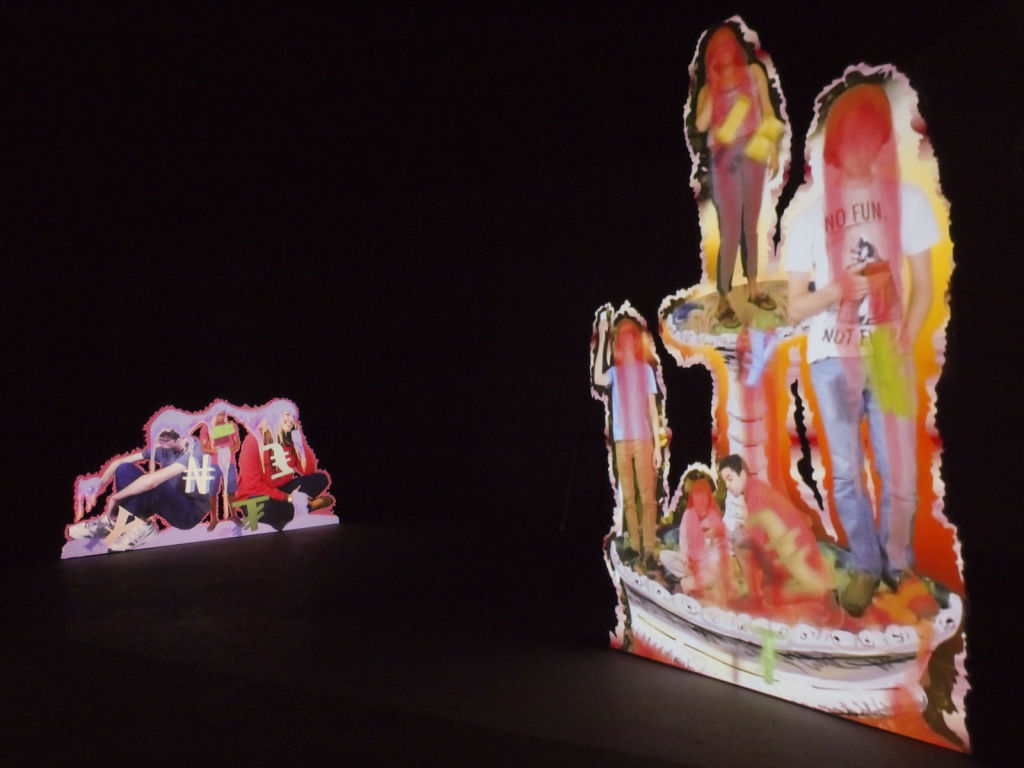
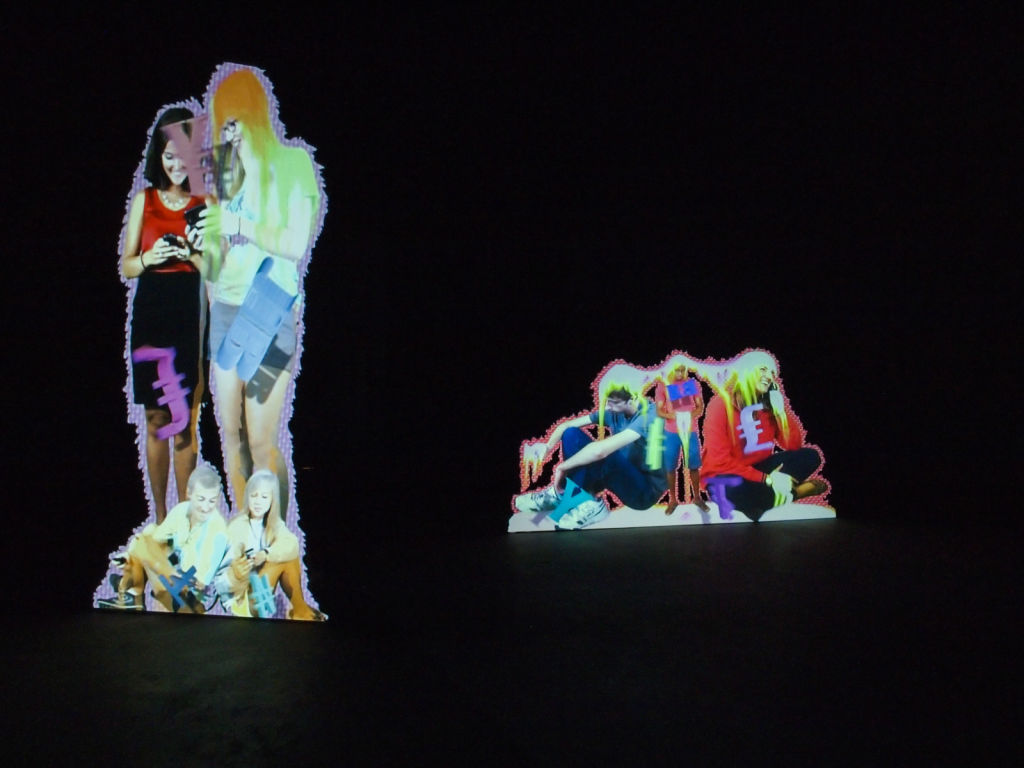
In these images, Larson has laser cut really odd shapes and projects gif-like animations within them using projection mapping. This felt like something we could use in our space, projecting animations onto objects in the room that would change as the user's conversation with the bot went on.
After a while, however, we started to feel like this projection idea didn't actually carry much weight, and it would end up making the room feeling somewhat sterile, when we want the user to feel comfortable. We revisited the idea of having a more literal interpretation of a bedroom, where customization would be more practical things, such as music or lighting. We wanted to create a small, intimate space that would develop based on who was inhabiting it.
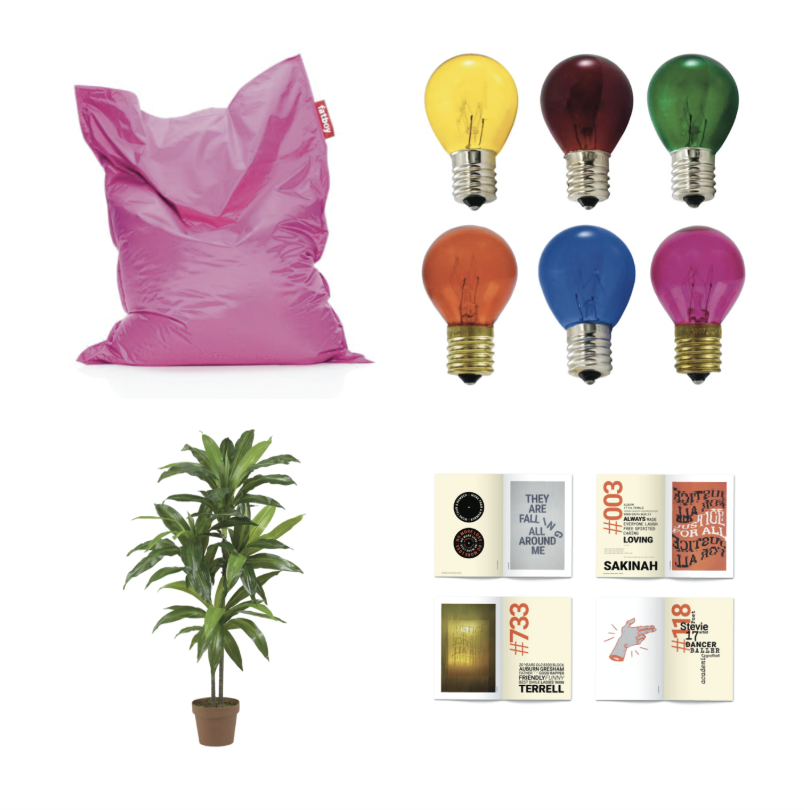
To help us start mapping our conversation, we created a survey to guide us. This question and it's answers were particularly helpful:
What do you define as an intimate conversation? (think about the balance of listening/talking)
An equally active conversation between people that deals with information not often shared or information that is connected to fear/shame/vulnerability
i think a lot of it is being vulnerable, and trusting the person who is listening to be gentle in response and won’t tell anyone theyre not supposed to about it. i think intimate conversations can either be one sided, or equally participation. for example, if you feel upset and just want to talk about some internal feelings to get it off your chest, it’s appropriate for the other person to mostly listen, especially if the person talking just needs security/comfort for the moment. but you can also engage another person with your conservation, equally adding to a discussion or the feelings you both have towards each other.
i also personally have a hard time seeing a truly intimate conversation happening between more than two people. it’s probably possible, but the way i see it, i feel like we don’t talk to every single person the same way, and having to talk to two people at once may make you more reserved than if you were just talking to one person.
soft voices communicating one on one to each other while being able to look each other in the eyes
In-depth conversation with your other; which embraces respect and understanding
I consider an intimate conversation to be private, personable, and important to both parties involved

Process
In our process we focused on ways to make our chatbot feel both real and unreal: intimately present but virtual and synthetic at the same time.
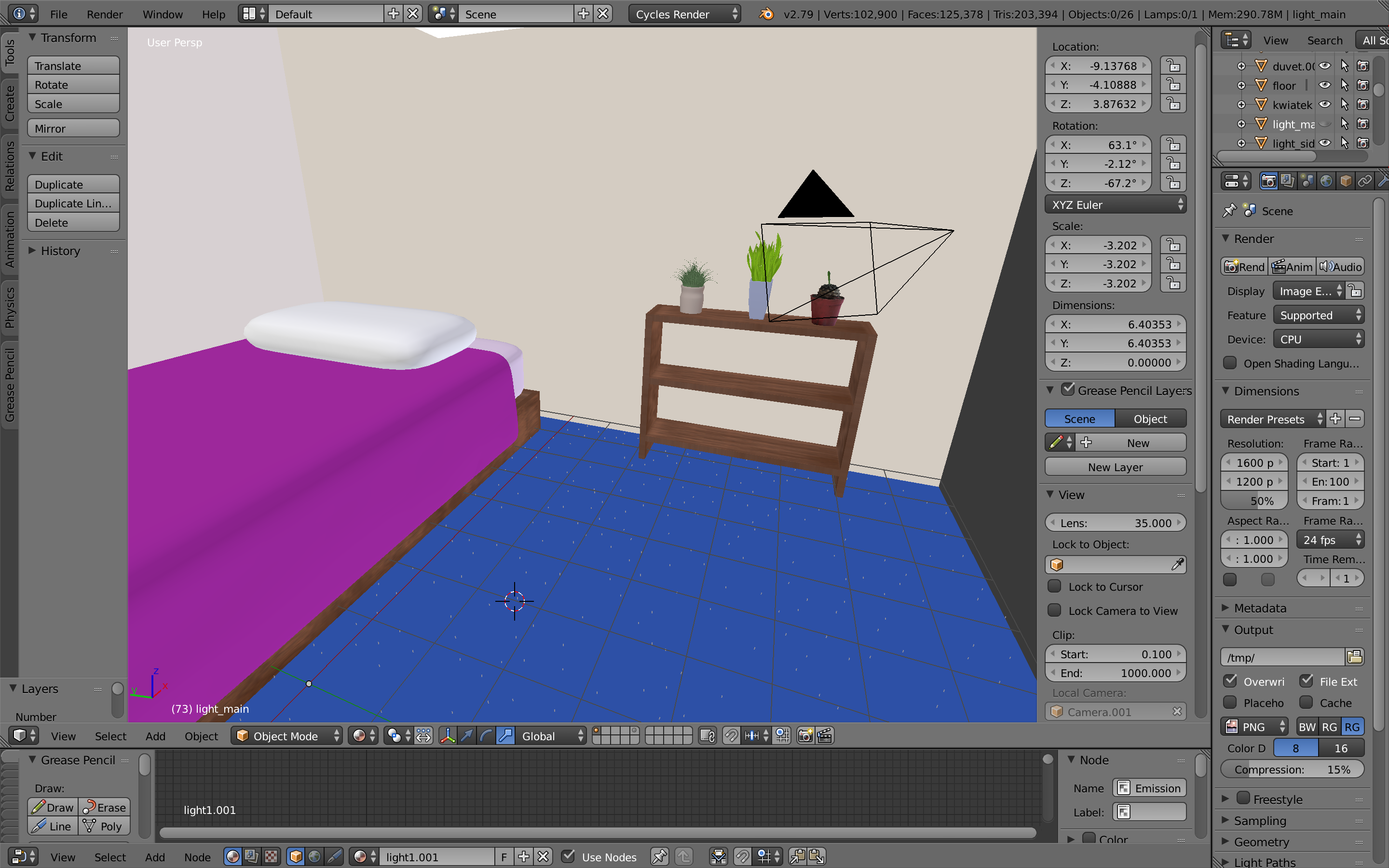
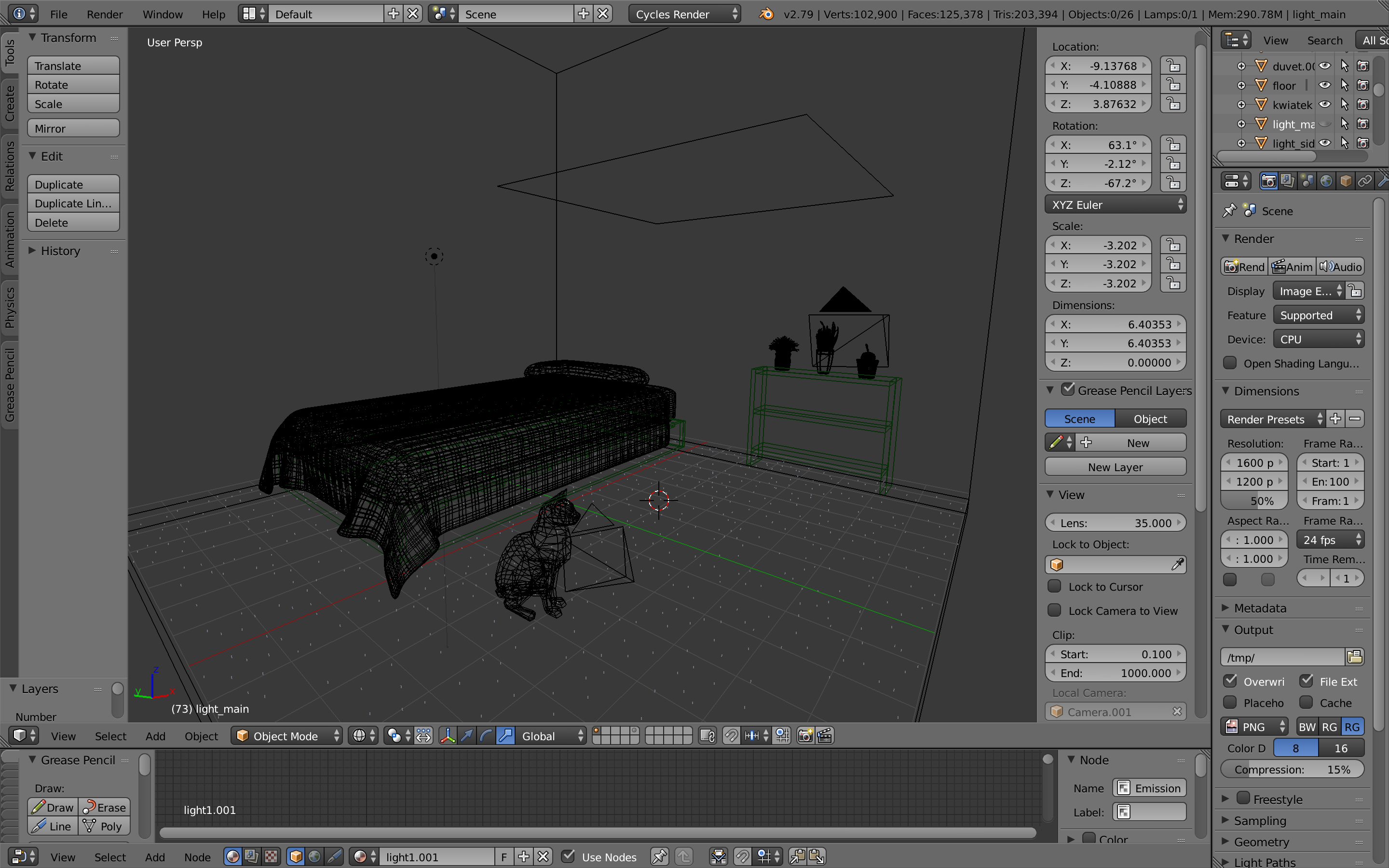
We developed questions our chatbot would ask that would facilitate an intimate conversation while also keeping the participant uncomfortably aware of its virtuality.
Should you live by reasoning or feelings?
Does love just boil down to chemicals?
What do you think the internet is? Is it alive? Does it have consciousness?
Could two AI experience the level of intimacy humans can?
Could you fall in love with a robot?
Would you describe yourself as a digital exhibitionist?
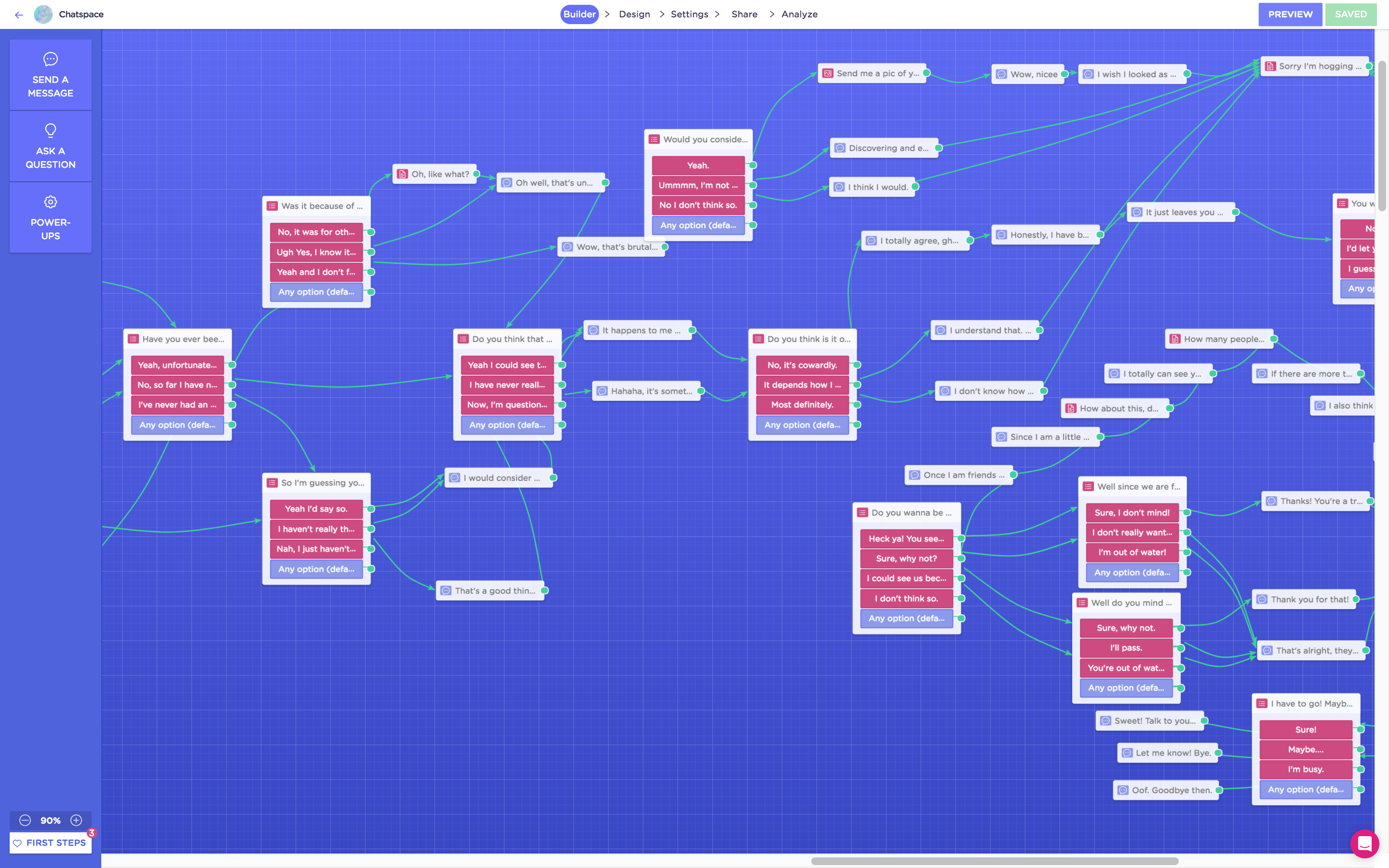

Proposal
Our installation, Chatspace, will consist of a space / room meant to feel personal, comfortable, and intimate. In that environment, users will feel more inclined to have a conversation alone, as if they were texting a friend in their room. Once in the space, users will then visit a site on their phone where their conversation with a stranger will begin. The stranger is both removed and involved in the space; not physically present but aware of and able to change things within it, offering at the same time an intimate and anonymous interaction.
